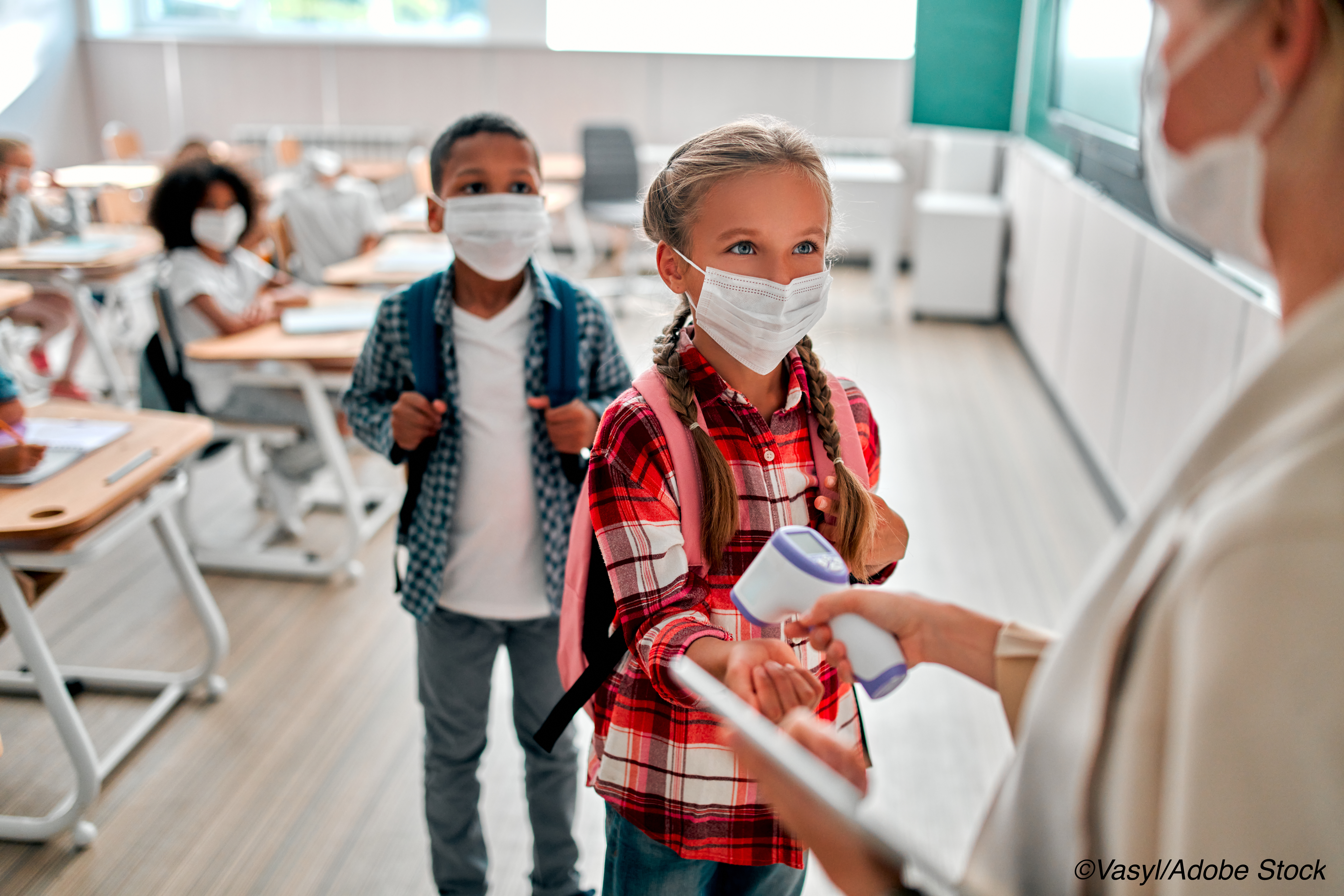Confirmed cases of Covid-19 among both students and staff were low in schools and nurseries in England following re-opening after the nation’s first lockdown earlier this year, researchers found.
In all, roughly 38,000 nurseries, 15,600 primary schools, and 4,000 secondary schools re-opened in June for the summer half-term, with a median daily total attendance of close to 928,000 students.
From June 1 through July 17, 113 single cases and 55 outbreaks consisting of 210 cases of Covid-19 were reported — of the single cases, 55 (49%) occurred among students and 58 cases (51%) occurred among school staff.
Higher levels of community transmission was strongly associated with school outbreaks, with school outbreak risk rising by 72% for every increase in 5 cases per 100,000 population within the local community, wrote researcher Sharif A. Ismail, of Public Health England, and colleagues in The Lancet.
“SARS-CoV-2 infections and outbreaks were uncommon in educational settings after they reopened during the summer term,” study co-author Shamez Landhani of Public Health England noted in a written press release. “The strong correlation with rates in the wider community also emphasizes the importance of controlling transmission outside the school gates to protect the educational settings. This is consistent with studies that have been conducted since this paper was completed in August, and forthcoming Public Health England research into transmission in schools during the autumn term.”
The researchers noted that the findings may not be generalizable to schools and nurseries in areas with high community SARS-CoV-2 transmission rates, since the study was conducted at a time when Covid-19 cases in England had fallen well below their highest levels recorded in the spring.
However, in an editorial, professors Stefan Flasche and W. John Edmunds of the London School of Hygiene & Tropical Medicine Centre for the Mathematical Modelling of Infectious Diseases noted that, while the findings are largely reassuring in the case of younger children, there is cause for concern that school settings involving older children and young adults are a significant source of transmission.
They noted that “widespread symptom-agnostic screening among university students has long shown rapidly expanding infection prevalence on campus following the reopening of universities, indicating effective transmission of SARS-CoV-2 among young adults, some of whom are only marginally older than secondary school-aged children.”
“Ismail and colleagues’ study supports the notion that opening schools despite SARS-CoV-2 circulation in the community is largely safe for children, but secondary schools in particular might nevertheless play a considerable role in transmission between households,” they concluded.
The prospective, cross-sectional analysis included daycare, primary, and secondary schools in England that reopened from June 1 through July 17 after the nation’s first lockdown.
Transmission events were classified as single cases, co-primary cases (at least two confirmed cases within 48 hours, typically within the same household), and outbreaks (at least two epidemiologically linked cases, with sequential cases diagnosed within 14 days in the same educational setting).
All events were followed up for 28 days after educational settings closed for the summer holidays, and negative binomial regression was used to correlate educational setting events with regional population, population density, and community incidence.
There were 113 single cases of SARS-CoV-2 infection, nine co-primary cases, and 55 outbreaks involving 210 separate cases.
Among the other main findings:
- Staff had higher case incidence than students (27 cases, 95% CI, 23–32 per 100,000 per day among staff compared with 18 cases, 95% CI, 14–24 in early year students; 6.0 cases, 95% CI, 4.3–8.2 in primary schools students; and 6.8 cases, 95% CI, 2.7–14 in secondary school students.
- Most cases linked to outbreaks were in staff members (154 [73%] staff versus 56 [27%] children of 210 total cases).
- The probable direction of transmission was staff to staff in 26 outbreaks, staff to student in eight outbreaks, student to staff in 16 outbreaks, and student to student in five outbreaks.
- The median number of secondary cases in outbreaks was one (IQR 1–2) for student index cases and one (1–5) for staff index cases.
“While staff did have higher infection rates, it’s important to note that the overall number of cases was very small and the vast majority of staff were completely fine and able to protect themselves and their students,” Ismail said in a press statement. “Teachers were very cautious with physical distancing and infection control practices when they were in class with their students, but this was more difficult to maintain outside the classroom. Teachers are also more likely to develop symptoms than students and are, therefore, more easily identified, which almost certainly contributed to their higher infection rate.”
-
Confirmed cases of Covid-19 among both students and school staff were low in schools and nurseries in England following re-opening after the nation’s first lockdown in the spring.
-
From June 1 through July 17, 113 single cases and 55 outbreaks consisting of 210 cases of Covid-19 were reported — of the single cases, 55 (49%) occurred among students and 58 cases (51%) occurred among school staff.
Salynn Boyles, Contributing Writer, BreakingMED™
This research was funded by Public Health England.
Neither the researchers nor editorial writers’ declared relevant conflicts related to this study.
Cat ID: 190
Topic ID: 79,190,190,926,138,192,927,150,928,925,934




Create Post
Twitter/X Preview
Logout